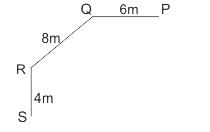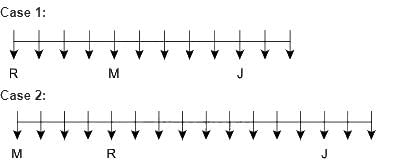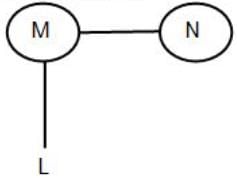Uttarakhand D.El.Ed Mock Test - 6 - UTET MCQ
30 Questions MCQ Test - Uttarakhand D.El.Ed Mock Test - 6
What is the significance of the spread of Indian culture and civilization to other parts of Asia?
What is the term for a situation where a team advances to the next round of a tournament without playing?
Which of the following is considered the National Game of India?
Consider the following statements.
1. Cigarette smoking exposes a person to benzene.
2. Benzene is a known carcinogen.
Which of the statements given above is/are correct?
A. The debasement of currencies, particularly US dollar, has given gold,
B. perceived a monetary unit, a leg up with the metal slated to record it's tenth annual gain,
C. the longest since 1920's. With the US Federal Reserve set to pump $600 billion
D. through purchase of debt, more money is expected to chase commodities such as gold.
What is the primary goal of the Uttarakhand government's new rule requiring vehicles to have garbage bags?
Direction: Study the following information and answer the given questions carefully.
Point P is 6m to the east of point Q, which is 8m to the north east of point R, which is 4m to the north of point S.
Q. In which direction is point S with respect to point P?
Direction: Study the following information carefully and answer the given questions besides.
Some boys are sitting in a row facing the south. Only three boys sit between O and H. Only two boys sit to the left of J. O sits third to the left of M. More than seven boys sit between P and J. V sits fourth to the right of O. Eight boys sit between R and J. More than 12 boys sit between P and H. Only three boys sit between R and M. T sits third to the right of M. P sits fourth to the right of R.
Q. At least how many boys are sitting in a row?
Statements: Some pens are books. Some books are pencils.
Conclusions:
- Some pens are pencils.
- Some pencils are pens.
- All pencils are pens.
- All books are pens.
Statements: All green are blue. All blue are white.
Conclusions:
- Some blue are green.
- Some white are green.
- Some green are not white.
- All white are blue.
Directions: Each of the following consists of a question and two statements numbered I and II given below it. You have to decide whether the data provided in the statements are sufficient to answer the question.
Q. What is the rank of A from the top in a class of 23 students?
Statement I: A’s rank is five ranks below H's rank, whose rank is 19th from the bottom.
Statement II: A’s rank is seven ranks above F's rank, whose rank is 11th from the bottom.
Directions: Each of the following consists of a question and two statements numbered I and II given below it. You have to decide whether the data provided in the statements are sufficient to answer the question.
Five friends – Akhil, Bina, Chetan, Dinesh and Ekta have different heights. Who is the second tallest among all?
Statement I: Akhil is taller than Chetan, who is taller than Ekta and Bina. Dinesh is not the tallest.
Statement II: Bina is taller than only Ekta. Akhil is taller than Dinesh and Chetan.
Direction: Study the following information carefully to answer the given questions:
If 'A () B' means 'B is the mother of A'
If 'A of B' means 'B is the father of A'
If 'A ÷ B' means 'B is the sister of A'
If 'A × B' means 'B is the brother of A'
If 'A + B' means 'B is the daughter of A'
If 'A - B' means 'B is the son of A'
Q. What does 'L () M ÷ N' means?
In this following questions, various terms of the letter series are given with one term missing as shown by (?). Choose the missing term out of the given alternative.
shg, rif, qje, pkd,?
Product of one fourth of the number and 120% of another number is what % of the product of the original number ?
Q. Two students appeared at an examination. One of them secured 9 marks more than the other and his marks was 56% of the sum of their marks. The marks obtained by them are:
In a company, the salary of a person is directly proportional to his experience. The salary of a fresher is Rs. 20,000 per month and the salary of a person who has an experience of 2 years is Rs. 50,000.
If the company follows the methodology, what will be the salary of a person who has an experience of 5 years?
The outer circumference of a circular track is 220 meter. The track is 7 meter wide everywhere. Calculate the cost of levelling the track at the rate of 50 paise per square meter.
Which of the following statement is incorrect about Problem solving?























